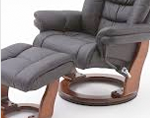10 Ways to Selecting the Ideal Computer Table for Your Office Setup
As the central hub of productivity, your computer table plays a crucial role in creating a conducive work environment. Whether you are setting up a new office or revamping your existing workspace, choosing the ideal computer table is a decision that warrants careful consideration.

In this blog post, we will explore ten key factors to guide you in selecting the perfect computer table for your office setup.
-
Consider Available Space
Begin by assessing the dimensions of your office space. Measure the area where the computer table will be placed to ensure that it fits seamlessly without crowding the room. Opt for a table that maximizes space utilization while providing enough room for comfortable movement.
-
Evaluate Ergonomics
Ergonomics is paramount for a productive and healthy workspace. Choose a computer table that allows for proper alignment of your body to the keyboard, mouse, and monitor. Look for adjustable features such as height and tilt to accommodate individual preferences and ensure a comfortable working posture.
-
Assess Storage Needs
Consider your storage requirements when selecting a computer table. If you need ample space for documents, cables, and other accessories, opt for a table with built-in drawers, shelves, or cable management solutions. Keeping your workspace organized enhances efficiency and minimizes distractions.
-
Material and Durability
Invest in a computer table made from durable materials that can withstand the rigours of daily use. Pay attention to the build quality to ensure longevity, especially if the table will be holding heavy computer equipment.
-
Style and Aesthetics
The visual appeal of your office contributes to a positive work atmosphere. Choose a computer table that complements the overall design theme of your workspace. Whether you prefer a sleek modern look or a more traditional style, finding a table that aligns with your aesthetic preferences enhances the overall ambience.
-
Cable Management
A cluttered workspace can impede productivity and create a disorganized appearance. Look for a computer table with integrated cable management solutions to keep wires and cables neatly organized. This not only improves the visual appeal but also makes it easier to access and maintain your electronic devices.
-
Mobility and Portability
If flexibility is a priority, consider a computer table with wheels or casters. This allows you to easily move the table to different locations within the office or make adjustments to the layout as needed. Mobility is especially beneficial in dynamic and collaborative work environments.
-
Budget Considerations
Establish a budget for your office furniture and stick to it. While it's essential to invest in a quality computer table, there are options available for various price points. Compare features, materials, and warranties to find a table that offers the best value within your budget constraints.
-
Brand Reputation and Reviews
Research reputable brands and read reviews from other users before making a purchase. A well-regarded brand often signifies quality and reliability. Additionally, user reviews can provide insights into the real-world performance and durability of a specific computer table model.
-
Future Expansion and Adaptability
Anticipate future needs and growth when selecting a computer table. Choose a design that allows for easy expansion or adaptation to changing requirements. Modular or customizable tables can be reconfigured as your office evolves, saving you the hassle of frequent replacements.
Conclusion
Selecting the ideal computer table for your office setup requires a thoughtful approach that balances functionality, ergonomics, and aesthetics. By considering these ten factors, you can make an informed decision that not only meets your immediate needs but also contributes to a comfortable and efficient workspace for years to come.
- 25.01.2024
-
Category:
- Office Furniture